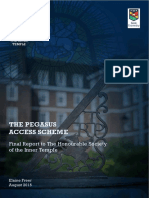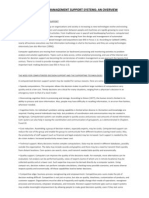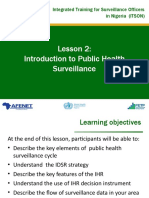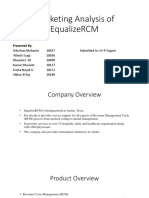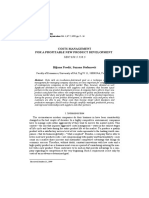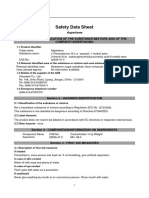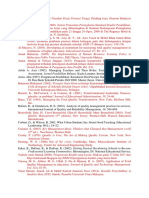1
TACKLING OUT
-
OF
-
POCKET HEALTH CARE COSTS A Discussion Paper
Lesley Russell Jennifer Doggett
Adjunct Associate Professor Consultant Menzies Centre for Health Policy Fellow University of Sydney Centre for Policy Development
January 2015
2
About this paper
The issue of growing out-of-pocket (OOP) costs and their impact on the ability of Australians to access needed health care is undermining the universality of Medicare, widening health inequalities and arguably leading to increased hospital costs. Currently, in
dividual co‐payments comprise around 17% of total health
care expenditure in Australia
–
the largest non‐government source of funding for health goods and services.
1
This includes where individuals
meet the full cost of goods and services ‐for example, medications that are not subsidised by
the PBS, health services not subject to a Medicare rebate ‐ and where individuals share the cost of
health goods and services with third party payers such as Medicare and private health insurance funds. This contribution by individuals represents a higher proportion of health care funding than in most other OECD countries and equates to $1,078 per capita. Moreover, in most OECD countries over the last decade the
proportion of total expenditure coming from individual co‐payments has been decreasing,
while in Australia out‐of‐pocket expenditure on health per
capita continues to grow at a faster rate than the broader economy, average incomes and overall household expenditure.
2
Measured in current prices, out‐of
pocket expenditure on health per capita has grown by 89.0% over the decade to 2011
–12. In particular, total patient out‐of‐pocket expenses for primary
and specialist care have significantly increased over the past 10 years, rising from $9.7 billion
in 2001
–
02 to $17.1 billion
in 2011
–
12, a 76% increase.
3
The average cost of a GP visit in 2013-14 was $47 from Medicare plus $5 from the patient. For a private specialist, the average visit cost $82 from Medicare plus $38 from the patient.
4
About one-
third of individuals’ out
-of-pocket costs go for medicines, and although this includes
nutritional supplements and ‘complementary’ and ‘alternative’
medicines, the out-of-pocket costs of essential over-the-counter and prescription medicines is also rising.
5
While these figures give a general guide to medical OOP costs, it is important to understand that in
health care there are few ‘average’ patients. That is because health care usage (and healt
h care costs) are not evenly distributed across the population. Increasing numbers of Australians are incurring high
1
Senate Reference Committee on Community Affairs. Out-of-pocket costs in Australian healthcare. August 2014. http://www.aph.gov.au/parliamentary_business/committees/senate/community_affairs/australian_healthcare/~/media/committees/clac_ctte/australian_healthcare/report.pdf
2
Ibid
3
Ibid
4
Britt H. General practice and value for money. John Menadue website 15 December 2014. http://johnmenadue.com/blog/?p=2922
5
Senate Reference Committee on Community Affairs. Out-of-pocket costs in Australian healthcare. August 2014. http://www.aph.gov.au/parliamentary_business/committees/senate/community_affairs/australian_healthcare/~/media/committees/clac_ctte/australian_healthcare/report.pdf
3 OOP costs on a regular basis, due to factors such as their location, type of illness and the availability of public health care services. People with chronic illnesses and disabilities use health care much more often than the rest of the population and the increase in out-of-pocket costs falls disproportionately on this group, which already has a lower average income, thus compounding their financial disadvantage. So begins a vicious cycle, where those with poor health and fewer financial resources must pay proportionately more out-of-pocket for their needed care, meaning they often go without. The Abbott Government has pushed to introduce or increase co-payments, claiming variously that growth in health care costs is unsustainable, price signals are need to reduce GP visits, budget deficits must be addressed and increased funding is needed for medical research. But targeting primary care for cost savings will quickly backfire. Research shows that while the number of GP visits has increased, these services are cost-effective; if the same services were performed in other areas of the health care system, they would cost considerably more.
6
The World Health Organisation has highlighted some of the potential negative consequences of co-payments, including the fact that they are the least equitable form of health funding because they are regressive (the rich pay the same amount as the poor for any particular service).
7
There is now a raft of Australian reports highlighting the adverse impacts of co-payments.
8
It is clear that whether the policy focus is on economic, health or social equity outcomes, greater attention needs to be paid to tackling rising out-of-pocket costs. With our ageing population and rising rates of chronic conditions, we can expect that there will be increasing numbers of Australians requiring long-term health and medical care from a range of different providers and in both hospital and community settings. Our current health care financing systems and safety-net arrangements are inadequate in meeting the needs of this group to ensure they can manage their health care costs and afford the services they need. This is a difficult topic
–
it involves a potent mix of evidence, ideology, consultation and leadership. There is no silver bullet and e
ffective solutions are unlikely to be found through simple ‘add ons’ to our
current health funding system, developed in an age where the majority of health care was for short-term, acute problems. They are more likely to involve a multi-faceted approach and require a re-thinking of the ways in which we generate and allocate our health care resources and ensure health care funding decisions reflect
our society’s
underlying values.
6
Britt H, Miller GC, Henderson J, et al. A decade of Australian general practice activity 2004
–
05 to 2013
–
14. General practice series no. 37. Sydney: Sydney University Press, 2014 http://ses.library.usyd.edu.au/bitstream/2123/11883/4/9781743324240_ONLINE.pdf
7
WHO (2003). Drugs and Money: Prices, Affordability and Cost Containment. http://apps.who.int/medicinedocs/en/d/Js4912e/3.4.html
8
The most recent of these are summarised at Russell L. Analysis of 2014-15 Health Budget: Unfair and unhealthy. http://ses.library.usyd.edu.au//bitstream/2123/11981/1/2014-15healthbudget.pdf\
4 To kick-start the necessary analyses, debates and policy formulations, we have developed this discussion paper which lays out some of the issues, as we see them. It is admittedly short on solutions, but we are hopeful these will come. There is no shortage of collated evidence and expert advice available drive policy development
–
all that is needed is leadership.
Lesley Russell Jennifer Doggett



